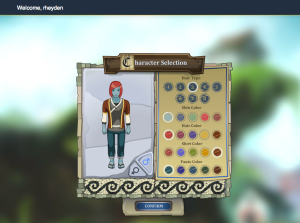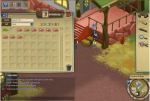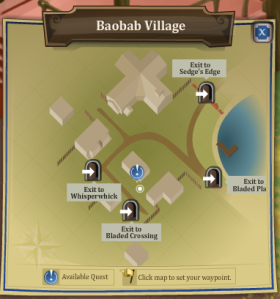There’s a new MMO in town – brought to us by the MIT Education Arcade, financed by the Bill & Melinda Gates Foundation, in collaboration with Filament Games. It’s the Radix Endeavor. This massively multiplayer online game (MMO) is designed for STEM learning in middle and high school. I just spent the last hour, on a quest with my avatar character in the Radix world, trying to get a feel for its possibilities.
The first thing to notice about the Radix Endeavor is that it’s browser-based. So no messy downloads, no firewall problems, and, from appearances, not a huge bandwidth requirement. Check out the minimum hardware requirements here.
In order to play the game you create a (free) player account, click the “play game” link on their website and – poof! – you land on the island of Ysola. This is a fictionalized world with made up names for people, plants and animals. There are biological problems to be solved, quests to be taken – all in the service of solving the health problems that seem to have befallen the inhabitants of the island.
The developers offer teacher and student accounts. I created a teacher account which gives me a dashboard to monitor my students progress in the game.
So let’s start with the good stuff:
- Great that it’s browser-based in terms of access, but of course, that also means some serious disappointments (see below)
- The game action is quest-based (i.e. “use your measuring tool to find a feltspittle flower that is a least 3 tomes high” and “capture a jngspout so we can feed him the feltspittle flower and analyze his excrement”…what middle schooler doesn’t want to hear that?)
- The world is persistent. I collected feltspittle flowers, logged off, signed in again, and my inventory persisted and my dialog with the doctor picked up where we left off.
- The game is designed to align with the Common Core standards in math and Next Generation Science Standards for high school.
- The teacher portal will aggregate data on the students’ decisions, strategies, and progress so that they can tailor what goes on in the classroom to the students’ needs.
On the not-so-good side:
- The look of the game feels very young to my eye. Simple line-drawn structures and characters, not much dimension, shadow or nuance. It feels like a paper-doll-cut-out world and I worry about that in contrast to the rich and sophisticated look of the other MMOs students know.
- No one else was in the world when I was there so I was only able to have “canned” conversations with bots. Not very satisfying.
- Extremely annoying and repetitive background music. I muted that right away. No need for that.
- Navigation is clunky – places you can’t go but you only figure that out when your avatar just won’t move forward (like hitting an invisible wall). Teleporting from region to region is verrrrry slow.
- There is a map you can summon but I was longing for the ability to change my camera position and see the whole scene around me – to zoom out.
- There doesn’t seem to be any way to take artifacts from your work in the world out of the world – that would be a nice touch for students creating blog posts or other artifacts of their learning.
-
Even though the quests are akin to real world problems (curing a mysterious lung ailment called “polyflux”, I worry about all the fictional names for animals, plants, and diseases. Just seems a shame to introduce yet another vocabulary when our students already have so much trouble with the existing language of science.
- There seems to be a system of badges/points you earn on your various quests (good!) but that function wasn’t yet in place in my tour of duty. Despite the fact that I correctly surrendered my feltspittle flower and my jingspout, my points did not go up (wah).
- I didn’t get too far past my initial three quests, but in the first hour, I felt like I was mostly doing busy work. Going and getting things, placing them in my backpack, bringing them to someone else to “judge” (did I get the right thing?). Not sure how long it would take to get to something meatier, but I would guess that most teenagers would have given up before I did.
- Teachers will need solid support materials to help them connect the quest structure of Radix to the rest of their plan in a biology course. I’m sure the developers are planning that but I didn’t find any such materials yet on their site.
It’s great to see so much thought and creativity applied to the development of meaningful STEM games. Many of the negatives I point out above are tradeoffs that must (now at least) be surrendered in exchange for a browser-based virtual world and its important to add that Radix is in beta. I could see tremendous potential for growth here but, right now, it feels a bit rough.





Students will put up with a lot of clunkiness if the basic gambit is engaging. Trending young will not help as students always want to be perceived as older. On a personal note, not sure I’d want to be on an island with some many health issues.
Board games have, for over a century, been commonly used for family nights. You know, the parents and the kids sit around the table, roll some dice, share some laughs, and the little one will probably end up flipping the table in the end? Fun for everyone. But as Geek & Sundry’s well-received show Browser Based MMORPG aptly demonstrates, board games also have a lot of potential for use at geek parties. And with the internet being an invaluable tool for advertising and purchasing products, we’ve seen independent developers flourishing lately with all sorts of interesting and inventive games.
Reblogged this on An Icelandic-Hispanic-U.S. Adventure and commented:
Thanks for sharing this with us Robin. Awesome!
Thanks for the mention, Maggie. 😉